




1855 Main St.
Architect: Welton Becket and Associates

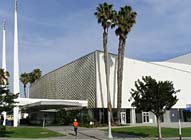
Santa Monica Civic Auditorium, 1958
1855 Main St - looking east
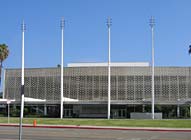
Another view
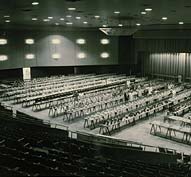
Interior risers, July 1957
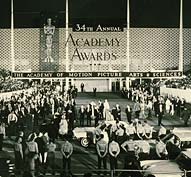
34th Annual Accadamy Awards
Santa Monica Civic Auditorium
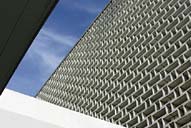
Exterior detail
The Santa Monica Civic Auditorium was constructed in 1958 in response to the development of the Santa Monica Civic Center. It was the third of three major 20th century Civic Center structures, which includes City Hall (1938) and the Courthouse (1951). It’s International Style (Modern) of architecture dominated building design from the first decade of the 20th century until 1972.
The Civic Auditorium is the only such example of the work of master architect Welton Becket in the City. It was renownened in its for the unique engineering and landmark use of hydraulic technology for adapting an assembly space to accommodate a vast variety of stage performances, athletic events, and exhibitions. It has been sited as a forerunner to the retractable domes and flexible seating of contemporary stadiums. Its acoustical design by UCLA Chancellor Vern O. Knutsen, was described as, “the most perfect and…(deserving)…a rating higher than that of the Royal Festival Hall in London” (Progressive Architecture, May 1959).
Artists that have performed at the Civic Auditorium include Andre Previn, Dave Brubeck, Pete Seeger, Ella Fitzgerald, Tony Bennett, Joan Baez, Bob Dylan, Bill Cosby, Bob Hope, Beatnik poet Allen Ginsburg, Elton John, Ray Charles, Arlo Guthrie, the Beach Boys, the Carpenters, Motley Crue, White Zombie and Beck.
Beyond our Civic Center, Becket designed several structures that still stand as unique icons in Los Angeles architecture, The firm's indelible mark on the Los Angeles landscape includes such icons as Capitol Records, the old Music Center, Bullock's Pasadena, the Beverly Hilton and Century City. These buildings are said to have help form the architectural identity for the young city of Los Angeles in the Mid-Century era. Additionally, he has designed structures in such diverse cities as Cairo, Havana, Manila, Honolulu, Tokyo, Boston, Philadelphia, Kansas City, and Dallas.
Welton Becket was born in Seattle, Washington in 1902. He received an architecture degree from the University of Washington in 1927 and also studied at the famed Ecole des Beaux Arts. He settled in Los Angeles permanently in 1933, and forming a partnership with established Los Angeles architect Charles F. Plummer and Washington classmate Walter Wurdeman. Becket embraced the philosophy of "total design," which guided his firm's approach thereafter. He encouraged clients to allow the firm to control all aspects of a design, including master/site planning, engineering, all interior work, finishes, fixtures, and landscaping, so that a unified and coherent building would be achieved.
The trio gained considerable local publicity with their award-winning design for the Pan Pacific Auditorium in 1935, and were then awarded a series of celebrity residential commissions for movie stars such as James Cagney, Caesar Romero, and Robert Montgomery. These were generally executed in traditional Period Revival styles.
Then there were two. Plummer passed on, Becket and Wurdeman continued. Their post WWII work focused on larger commercial projects and took on aspects of the Late Moderne and International styles. Their best known commissions included Bullock's Department Store in Pasadena (1944) and buildings for General Petroleum (1946) and Prudential Insurance (1947) in Los Angeles.
Then there was one; Wurdeman passed on in 1949; Becket grew Welton Becket and Associates into one of the largest architectural firms in the United States, with headquarters in Los Angeles and offices in San Francisco, New York, Houston, and Chicago.
Around Los Angeles, Becket was named master planner for UCLA in 1948
and continued as supervising architect for the campus until 1968. Architecturally
he created such icons of mid-twentieth century Modernism as the Capitol
Records Building (1954-56) and in 1963 he designed the world's first concrete
geodesic dome - the Cinerama Dome. Other significant buildings include
the Beverly Hilton Hotel, the Sports Arena (1959), Los Angeles International
Airport Theme Building the Federal Office Building as well as the Santa
Monica Civic Center.
At the time of his death in 1969. In 1987, Ellerbe Associates acquired
Welton Becket Inc. to become Ellerbe Becket Inc. The firm continues today
as Ellerbe-Becket. Leadership of the firm was assumed by MacDonald Becket,
Welton's son, after At the time of Becket's death in 1969, Welton Becket
and Associates was the largest architectural office in the world.